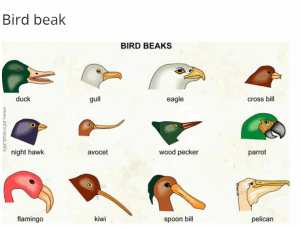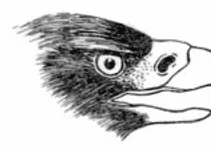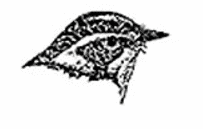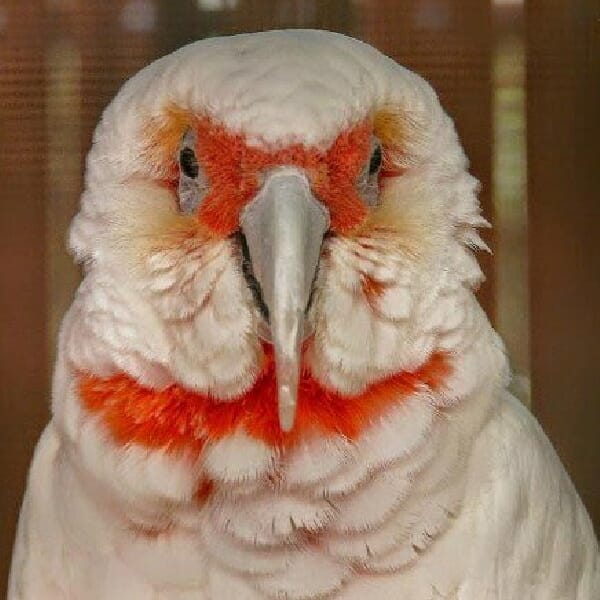Last Updated on by Mitch Rezman
Our economical bird nail trimmer has become very popular now that caged bird keepers realize how easy it is to trim their own bird’s nails while saving money at the same time. Make sure you know how to towel your bird to make nail trimming much easier.
Although we recommend using our electric nail trimmers to keep your bird’s nails trimmed, we do not recommend that you attempt to trim your bird’s beak.
It’s a sensitive organ and has a lot of sensory receptors and which could potentially be very painful to your bird if handled in the wrong way, which got me to thinking about today’s topic. Think – just slipping a 1/8 inch on the bird’s beak in the wrong direction can damage sensory cells (Herbst corpuscles).
Note – A little semantic housekeeping here in these modern times of ornithology the term beak & bill can be used interchangeably.
Your bird’s beak is the most important part of his or her anatomy. They use it for any number of things from grooming to eating to moving objects around. Fighting, probing for food, courtship, feeding youngsters, and for some species even killing prey in the wild..
You can see from the illustrations below beaks vary widely based upon the species need, but at the end of the day, all beaks are very similar. They all have an upper and lower mandible which are both covered with a thin layer of keratinized epidermis known as the rhamphotheca.
Thin, slender, pointed beaks are found mainly in insect eaters. They are used to pick insects off leaves, twigs, and bark. This warbler is a good example.
Beaks that are flat and wide at the base are found on birds that catch insects in flight, such as flycatchers. These birds also often have “whiskers,” which are actually modified feathers, at the corners of the mouth, which effectively widens the mouth opening, allowing more effective capture of prey.
Feathered Factoid – beaks are an evolutionary concession to weight saving over the much heavier jaws & teeth arrangement mammals use to tear apart food.
The upper mandible gets support from a three-pronged bone called an intermaxillary. This design where the upper prong of the bone is embedded into the forehead while the lower prongs are attached to the sides of the skull make for a very efficient operation. At the base of the upper part of the beak, you’ll find a thin sheet of nasal bones that are attached to the skull and is something called the nasofrontal hinge which provides mobility.
The lower mandible is supported by a single bone called the inferior maxillary bone which is a compound bone made of two pieces that attach on either side of the head to the quadrate bone. Muscles that enable the bird to close its beak attach to both sides of the head.
What you see on the outside of the beak is this thin horny sheath of keratin covering all the rhamphotheca which comes in two flavors depending upon whether it’s on the top of the bottom part of the beak. There’s also a vascular layer within the beak which means blood running through it and it grows continuously in most species.
If you’ve ever had a finger chomped on by a large parrot the (up to 4) laser-like incisions on your now bloody finger were made with the edges of the top and the bottom of the beak and these are called Tomias.
The Ridgeline of the upper part of the beak is called the Culmen – one area used to measure pending birds in the wild.
A problem with hand-fed young birds or chicks is when human hands are too strong and or not holding the beak correctly, the beak can grow incorrectly as the chick matures which results in a deformity. In Macaw chicks the use of too much force can cause the beak top part of the beak to grow off to one side. The result is called a “scissored” beak.
With young cockatoos, cockatoo moms pull on the upper beak of the young birds. They use their beak to feed with a “pumping action”. By not utilizing that “pulling of the beak” pumping action while hand-feeding by humans. the feeding process can result in the upper beak being too short in relation to the lower one. And you thought setting your alarm clock to wake you every 2 hours for a hand-feeding for 6 or more weeks was all you had to think about:-)
Feathered Factoid – Finches use their beaks like tweezers to extract seeds.
It is said that something called the “bill tip organ” is far more well-developed among birds that live in wet habitats including parrots. This bill tip end has a high density of nerve endings known as the corpuscles of Herbst.
There you’ll find very tiny pits in the bill surface which are occupied by cells that sense pressure changes. It is thought that this allows birds to have a remote touch which means it can detect movement without direct touch.
Some Toucans use their beaks (the walls of which are hollow) to rid themselves of excess heat.
Much like feathers birds have various colored beaks resulting from concentrations of pigments. We know that birds can see light in the ultraviolet spectrum which may radiate from some of their beaks once again signaling to other birds and about their quality
Let’s not forget the egg tooth which is not really a tooth but a calcareous prominence at the tip of the beak of an embryonic bird at hatching which they use to chip their way out of the egg.

A cone shaped bill is found in many birds such as finches and grosbeaks. It is a strong beak used for cracking seeds.

Thin, slender, pointed beaks are found mainly in insect eaters. They are used to pick insects off leaves, twigs, and bark. This warbler is a good example.
Woodpeckers have strong beaks which taper to the tip, forming a chisel for pecking holes in trees for food or nests. Most feed on insects that live under the bark.
Hummingbirds have long, tubular bills that resemble straws, which they use to sip nectar from flowers.

Mergansers, specialized for eating fish, have sharp tooth-like structures on the edge of the bill to hold fish tightly.

Hawks, owls, and other birds of prey that catch and kill live prey have sharp, “hooked” beaks. These are used to bite the skull or neck and also to tear the body into pieces small enough to swallow.

The edges of a Mallard’s bill are fringed to strain plants, seeds, and small animals from mud and water.

Beaks which are flat and wide at the base are found in birds that catch insects in flight, such as flycatchers. These birds also often have “whiskers,” which are actually modified feathers, at the corners of the mouth, which effectively widens the mouth opening, allowing more effective capture of prey.
When your birds are eating they will be active and enjoy wiping their beaks on a solid surface to get rid of the excess food particulate that inevitably sticks to it. Beak conditioners enable your bird to keep its beak in tip-top shape much like a chef uses a butcher’s steel to keep a razor-sharp edge on his knives. What’s the best way to let nature take its course through birds’ beaks? Get a beak conditioner for your birdcage and put it somewhere where your bird will use it like near the feeder dishes.
Much of this blog post was collected from others – if it’s yours, please let us know so we can give you credit for your fine work.
Written by Mitch Rezman
Approved by Catherine Tobsing
Author Profile
Latest entries
 The Traveling BirdJune 26, 2025Can You Name 5 Parrot Species That Are Living Wild in the USA?
The Traveling BirdJune 26, 2025Can You Name 5 Parrot Species That Are Living Wild in the USA? Bird BehaviorJune 26, 2025How is it Parrots Are Problem Solvers Social Animals and Even Use Tools?
Bird BehaviorJune 26, 2025How is it Parrots Are Problem Solvers Social Animals and Even Use Tools? Bird & Parrot AnatomyJune 25, 2025How a Tiny Chemical Modification Makes Parrots Nature’s Living Paintings
Bird & Parrot AnatomyJune 25, 2025How a Tiny Chemical Modification Makes Parrots Nature’s Living Paintings PigeonsJune 20, 2025How Do Parrots Thrive in Cities Outside Their Native Habitats?
PigeonsJune 20, 2025How Do Parrots Thrive in Cities Outside Their Native Habitats?





